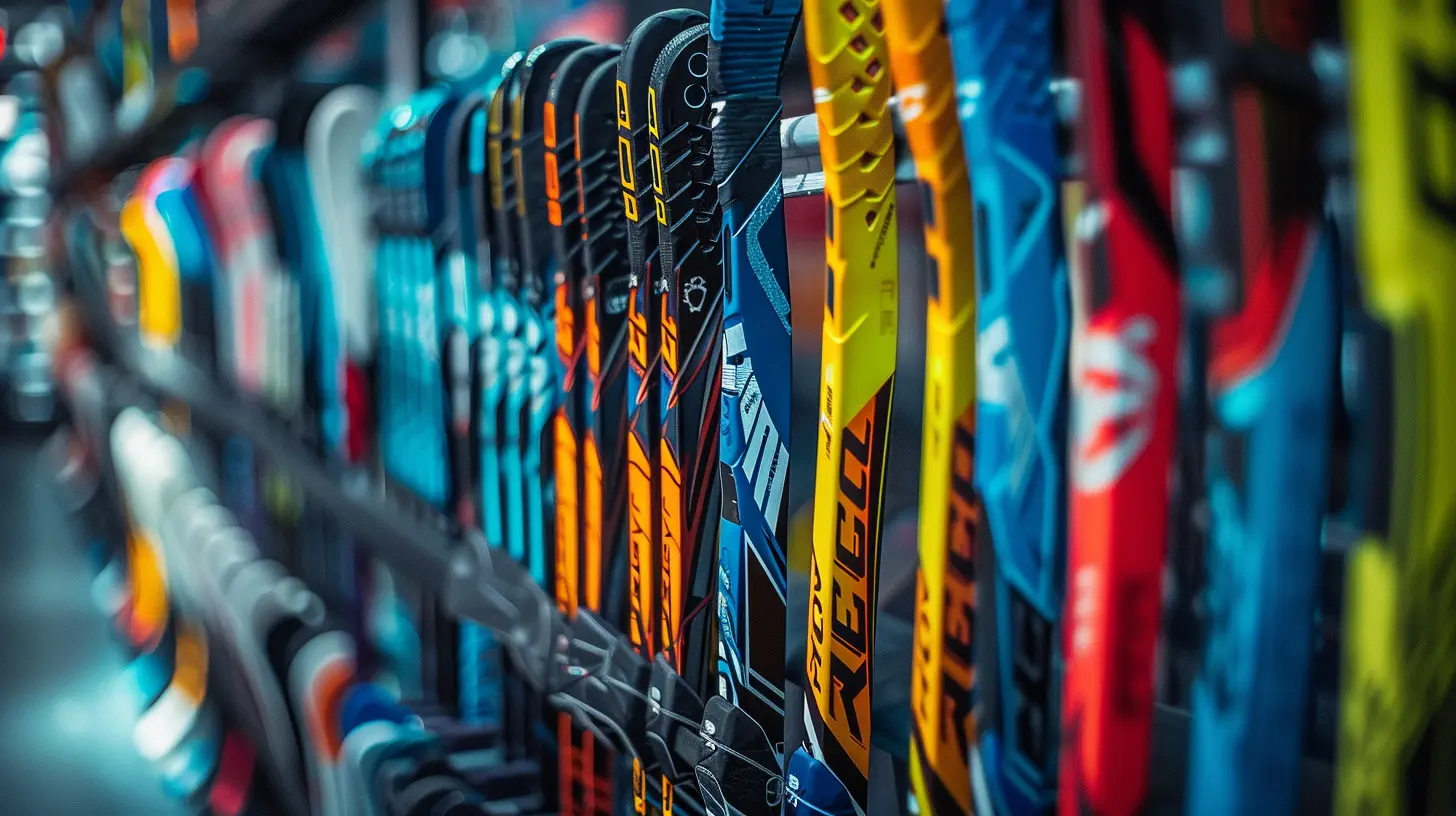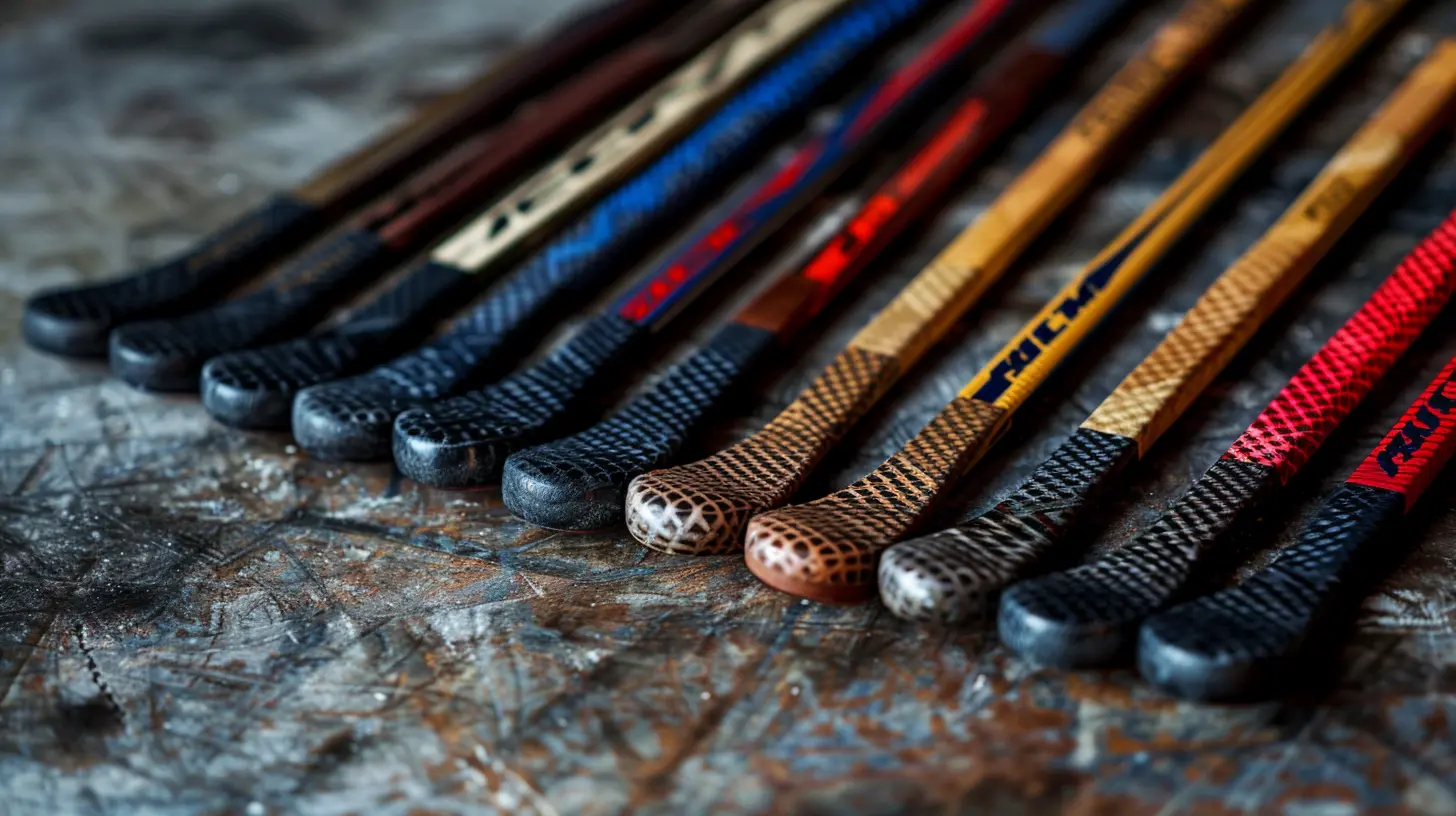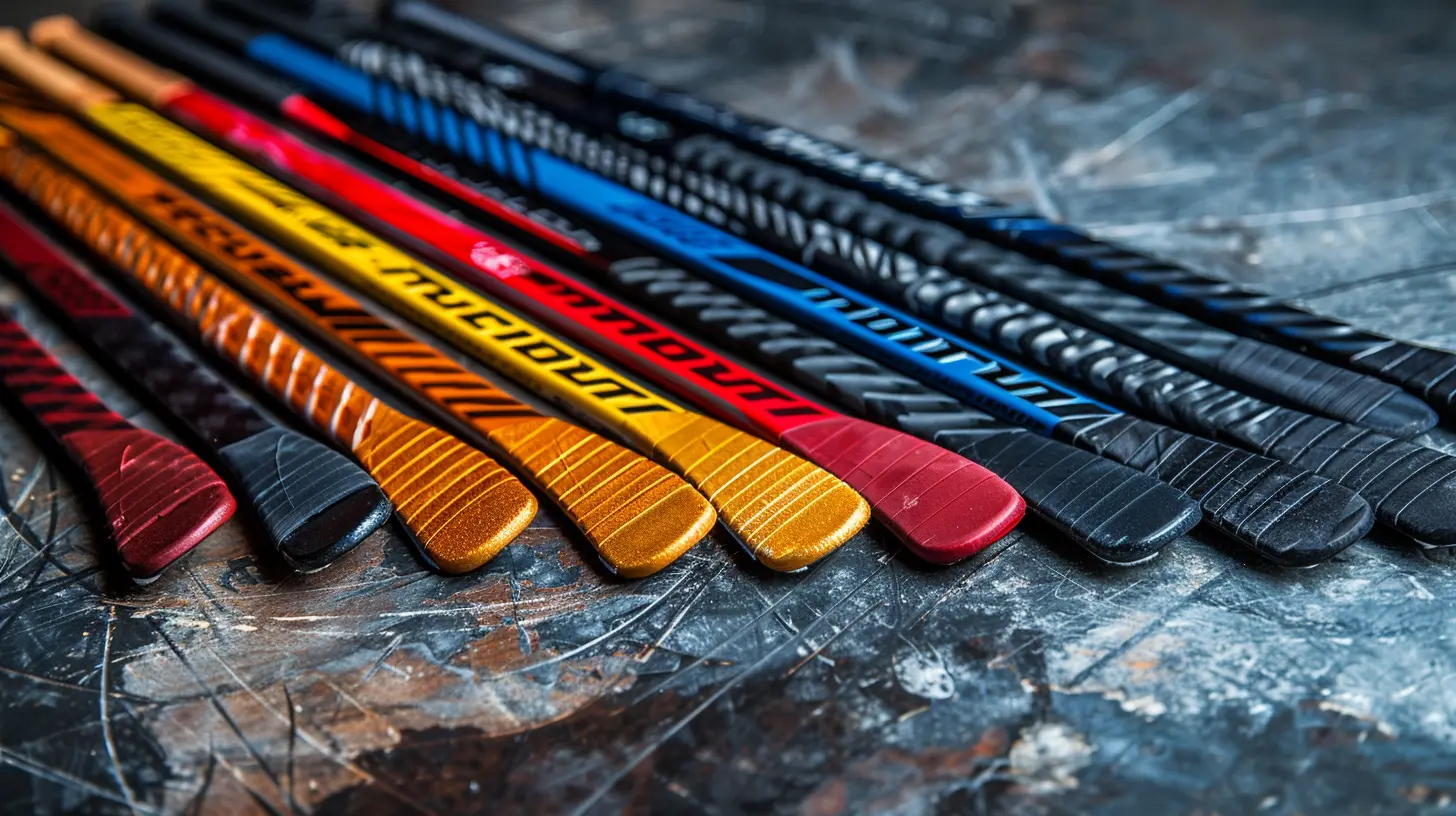What to Look for in High-Performance Hockey Sticks
22 July 2025
Hockey is a fast-paced, high-intensity sport where every second and every movement counts. Whether you're a beginner or a seasoned pro, having the right hockey stick can make all the difference in your performance on the ice. But with so many options out there, how do you know which stick is the best fit for you?
Picking a high-performance hockey stick isn't just about grabbing the most expensive one off the shelf. It’s about understanding the details—things like flex, kick point, materials, and blade design—all of which can impact your game. In this guide, we'll break down everything you need to look for when choosing the perfect hockey stick. 
1. Stick Flex: Finding the Right Stiffness
One of the first things you need to consider is the stick flex. This refers to how much the stick bends when force is applied, usually measured in a numerical rating (e.g., 75, 85, 100).- Lower flex (50-75) – More whip, easier to load shots, great for quick wrist shots and younger players.
- Mid-range flex (80-95) – A balance between power and precision, suited for all-around players.
- Higher flex (100+) – Less bend, more power, ideal for strong players who take heavy slap shots.
The flex you choose should match your strength and playing style. A lower flex provides better puck feel, while a stiffer stick delivers more power for heavy shooters.
Tip: A good rule of thumb is to pick a flex that’s about half your body weight! 
2. Kick Point: Where the Stick Loads and Releases
The kick point determines how and where the stick bends when you shoot, which can drastically affect your shot speed and accuracy.Types of Kick Points:
- Low kick – The stick flexes near the blade, perfect for quick snapshots and wrist shots (ideal for forwards).- Mid kick – Flexes in the middle of the shaft, offering a balance of power and accuracy (great for all-around players).
- High kick – Bends closer to the top of the shaft, generating massive power for slap shots (preferred by defensemen).
If you love taking quick shots in tight spaces, a low kick stick is your best friend. If you rely on heavy, booming shots from distance, go for a high kick stick. 
3. Stick Materials: Carbon Fiber vs. Composite
The material of your stick will influence its weight, durability, and overall feel.Most high-performance hockey sticks are made from composite materials, primarily carbon fiber. Here’s what you need to know:
- 100% Carbon Fiber – Lightweight, strong, delivers excellent energy transfer for powerful shots.
- Carbon & Fiberglass Mix – Slightly heavier but more durable and budget-friendly.
- Full Fiberglass – Typically found in beginner sticks, less power but offers longevity.
If you're serious about performance, go for a carbon fiber construction. It reduces weight while offering better responsiveness and power. 
4. Blade Curve: How It Affects Your Game
Your stick’s blade curve plays a big role in how you handle the puck, pass, and shoot.Blade Curve Options:
- Toe Curve – Ideal for quick wrist shots and better puck control.- Mid Curve – Balanced for passing, shooting, and stickhandling.
- Heel Curve – Great for powerful slap shots and long-range accuracy.
Think about your playstyle—do you take a lot of quick shots? Need better stickhandling? Your blade curve should complement your offensive approach.
5. Blade Lie: The Stick’s Angle Relative to the Ice
The blade lie is the angle between the shaft and the blade. Players who skate upright tend to prefer a higher lie (6-7), while those who play in a crouched position benefit from a lower lie (4-5).Not sure what to pick? Check the wear pattern on your current stick’s blade—if the toe or heel is wearing unevenly, you might need to adjust your lie.
6. Stick Length: Striking the Right Balance
Stick length affects control and shot mechanics. You don’t want a stick that’s too short or too long—it should be somewhere between your chin and nose when standing in skates.- Short sticks – Better puck control and stickhandling.
- Long sticks – More reach for poke checks and powerful shots.
If you’re a playmaker who loves deking opponents, a short stick might be your best bet. If you’re on defense, a longer stick helps with reach and defensive plays.
7. Grip vs. Non-Grip: Which One is Better?
Hockey sticks come with either a grip coating or a smooth finish on the shaft.- Grip sticks – Provide extra stick control, especially useful in high-pressure situations.
- Non-grip sticks – Allow for quick hand adjustments, making it easier to slide your hands up and down.
This choice comes down to personal preference. If you like more control, go for a grip stick. If you prefer a smooth feel with easy movement, a non-grip stick is the way to go.
8. Durability vs. Performance: Finding the Sweet Spot
High-performance sticks are designed to be lightweight and optimized for performance, but that often means they wear out faster. On the other hand, more durable sticks may be slightly heavier and less responsive.- If you play frequently and demand top-tier performance, be prepared to replace your stick more often.
- If you want a stick that lasts longer, look for reinforced materials, though it may come with a slight weight trade-off.
9. Price vs. Quality: Is Expensive Always Better?
Let’s be real—top-tier hockey sticks can get ridiculously expensive. But does a $300 stick automatically make you a better player? Not necessarily.Consider your skill level and how often you play:
- Casual players – Mid-range sticks ($100-$150) offer great value without breaking the bank.
- Competitive players – High-end sticks ($200-$350) provide the best weight, balance, and feel.
- Beginners – Entry-level composite or fiberglass sticks ($50-$100) are perfect to start with.
Don’t just chase the price tag—find a stick that truly matches your playing style!
Final Thoughts
Choosing the right high-performance hockey stick is all about understanding how different factors like flex, kick point, material, blade design, and length affect your game. There’s no single “best” stick—what works for you might not work for someone else.The key is to experiment, try different options, and find a stick that feels like an extension of your hands. After all, the right stick can be a game-changer on the ice.
So, next time you're in the market for a new hockey stick, keep these factors in mind. Your shot, stickhandling, and overall performance will thank you!
all images in this post were generated using AI tools
Category:
Sports EquipmentAuthor:

Preston Wilkins
Discussion
rate this article
1 comments
Felicity Summers
Focus on flex, material, and weight for optimal performance and control.
August 12, 2025 at 3:34 AM

Preston Wilkins
Thank you for your insight! Focusing on flex, material, and weight is indeed crucial for maximizing performance and control in hockey sticks.


